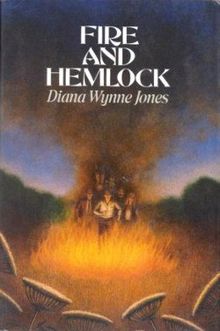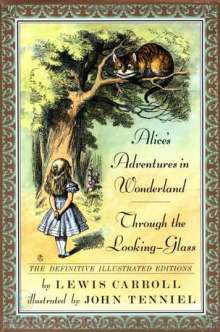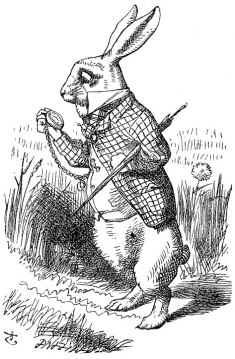 “Isn’t this supposed to be a fantasy?” My friend thumbs the book’s pages as a frown spreads across her face. “I mean, it’s good, kinda, but there isn’t much, you know, different, in it.”
“Isn’t this supposed to be a fantasy?” My friend thumbs the book’s pages as a frown spreads across her face. “I mean, it’s good, kinda, but there isn’t much, you know, different, in it.”
Blasphemy! I think. But I know what she means. There’s no spectacle about Diana Wynne Jones’ Fire and Hemlock. It’s a damn good fantasy, but it’s subtle with that fantasy. It’s not one of those sweeping epics with sky-burning battles of global proportions, powers that can wrinkle time and send us in one earth and out another, or characters filled with magic up to their eyeballs.
Now don’t get me wrong: these can be good fantasies. Heck, I’m in the midst of editing one for publication right now. However, a common trouble with such spectacular epics is that the character doesn’t often move the story along. We’re not reading for the characters so much as for the battle, the quest, the romance, etc. When the story zooms from the epic-ness to the characters and lets them dictate the story, we have a much more personal perspective, but we then we don’t sweep the epic.
 I’d like to focus on Fire and Hemlock‘s beginning to make this point. Let’s take a classic like Alice in Wonderland for comparison. Alice enters Wonderland because she follows a White Rabbit in a waistcoat down its rabbit-hole:
I’d like to focus on Fire and Hemlock‘s beginning to make this point. Let’s take a classic like Alice in Wonderland for comparison. Alice enters Wonderland because she follows a White Rabbit in a waistcoat down its rabbit-hole:
There was nothing so very remarkable in that; nor did Alice think it so very much out of the way to hear the Rabbit say to itself, `Oh dear! Oh dear! I shall be late!’ (when she thought it over afterwards, it occurred to her that she ought to have wondered at this, but at the time it all seemed quite natural); but when the Rabbit actually took a watch out of its waistcoat–pocket, and looked at it, and then hurried on, Alice started to her feet, for it flashed across her mind that she had never before seen a rabbit with either a waistcoat-pocket, or a watch to take out of it, and burning with curiosity, she ran across the field after it, and fortunately was just in time to see it pop down a large rabbit-hole under the hedge.

(Gosh, what a long sentence.)
(Anyway.)
The image of a talking, clothed animal–who tells time!–running through our world snags a reader’s and promises some zany adventures to come. With Fire and Hemlock, the story opens with….wait for it…a girl not really packing for college.
…
Magic! Adventure! Alakazam, Alakazoo!
But there is magic already at work, if you listen to the heroine Polly:
And, now Polly remembered, she had read the stories through then, and none of them were much good. Yet–here was the odd thing. She could have sworn the book had been called something different when she first bought it….Half the stories she thought she remembered reading in this book were not there…Why should she suddenly have memories that did not seem to correspond with the facts? (4-5)
This begins Polly’s journey back into the memories that had somehow been hidden within her. The “Rabbit-Hole” moment comes in her first memory, when she and her friend Nina are running around in black dresses for a game, get separated, and Polly stumbles onto the peculiar estate of town, Hundson House:
When Polly came out into the open, it was not a road after all. It was gravel at the side of a house. There was a door open in the house, and through it Polly caught a glimpse of Nina walking up a polished passage, actually inside the house…cautiously, she tiptoed up the passage. (12)
Polly finds herself in the middle of a funeral and wishes to slink out, but 10-year-olds don’t always know how to do that sort of thing. Thankfully a young man named Tom helps by offering to take her for a walk out back.
The sun reached the dry pool. For just a flickering part of a second, some trick of light filled the pool deep with transparent water. The sun made bright, curved wrinkles on the bottom, and the leaves, Polly could have sworn, instead of rolling on the bottom were, just for an instant, floating, green and growing. (23)
Here readers get their first clue that this place is not as normal as her Gran’s. She may not be talking to blue caterpillars or playing croquet with flamingos, but Polly’s definitely stumbled into a group of people where “normal” no longer applies. By the novel’s end we discover that Laurel, the woman whom Polly mistook for Nina earlier, is none other than the Queen of the Fairies, and she wants Tom to sacrifice himself for the King of the Fairies.
It’s a slow build from funeral to Fairy Court, and almost entirely grounded in normal places like Polly’s hometown. But the beauty of such a subtle fantasy is that it makes you peer at the stubborn door at your own gran’s, or sneak down that one badly lit aisle of the supermarket, and wonder:
What else is going on back there?

Sometimes I think I live in a place where ‘normal no longer applies’. Usually that’s okay.
LikeLiked by 1 person
Life’s never dull in such a place. 🙂 xxxxx
LikeLiked by 2 people
Rather the tale be told in a mist than under a thunderstorm. I agree with you, Ms Lee.
LikeLiked by 1 person
Thanks. 🙂 x
LikeLiked by 1 person
My mother nicked the last of the Whoppers from America as I was about to read this post. I had to start all over. Not a good day for a dyslexic.
LikeLiked by 1 person
Oh no! I’m so sorry, I should have done a soundcloud bit of this one. 😦
LikeLiked by 1 person
Don’t worry. The loss of the last Whopper from the bag has destroyed me. 3 in a pack the perfect sugar rush pre the gym, and she scoffed it from right in front of me!
LikeLiked by 1 person
The audacity!
LikeLiked by 1 person
I know! I was keeping that last one back. It’s funny how little things are so annoying.
LikeLiked by 1 person
Ah t’was Thursday and I thought, T’is Lady Jean day. Personally I prefer character driven to everything. Alice of course has this big adventure but she was the kind to follow that rabbit. Now people might have said No. xxxx
LikeLiked by 1 person
Ah, hugs to my Lovely Shey on this day. 🙂 You make a great point–it’s in Alice’s nature to follow the rabbit. what if Alice’s sister had seen it? Would SHE go after the rabbit? Doubt it. Sometimes I think we readers need a character to drag us up and out of our boring lives because we ain’t gonna do it ourselves. 🙂
LikeLiked by 1 person
I do like characters. For me it has to be the character. Lol if the sister had seen it there would have been no book and then you look at Alice’s reactions to everything and everyone she meets. She ain’t exactly fazed is she?
xxxxxxxxxxxxxxxxxxx
LikeLiked by 1 person
No! Which makes me wonder how she interprets day-to-day life. Maybe she’s the crazy one in this sane, dull world… 😉
LikeLiked by 1 person
One of the things I really love about F&H is the virtual booklist Polly’s given by Tom, the one he feeds her with through much of the story. My memory of them is that they were mostly about being catapulted into an adventure, disappearing down some hole, yes, but other routes feature too, all of them Unexpected Journeys (the capitals are intentional!).
They are, in a way, word maps to navigate the fantasy world she’s got sucked into. With the promise of all these titles Polly’s adventure doesn’t need to be on an epic scale.
But DWJ can do epic, can’t she, witness Dalemark and Derkholm. It’s just that the fantasy in F&H is more internalised. And in a way that’s truer to how all we fantasy fans really experience it.
From all this guff you’ll gather I found your piece extremely stimulating!
LikeLiked by 1 person
Oh gosh, I LOVE Derkholm. And it’s so bloody brilliant the way she takes every trope and turns them on their heads, yet STILL makes them work! There’s a great moment in F&H when Polly tries to write like the Tolkien-esque stories she’s read, and then Tom poo-poos it all for not being original. The maps from other stories can inspire our adventures, but they shouldn’t limit them–I think DWJ would agree to that! 🙂 Thanks so much for reading. You’ve always got the DWJ connections I crave!
LikeLiked by 1 person
I read the whole of that book list! It’s pretty varied. The slow fantasies are there too.
LikeLiked by 1 person
Haha you’re right that Alice didn’t think too much before following that rabbit – which is all the more reason for her to be going to college for more education later 😉 I love reading fantasy, escaping the day… 🙂
LikeLiked by 1 person
I always thought Alice had very poor impulse control – bad enough to set off after a clothed rabbit, but knocking back the contents of a bottle that says DRINK ME – tsk, tsk. Silly girl! As for Fire and Hemlock – I’ve never read it. And now, after reading your wonderful article, I’m DESPERATE to do so! Have you ever read Among Others by Jo Walton? It’s a fabulous book that also has that layer of ordinary alongside the other… Another wonderful article, Jean!x
LikeLiked by 1 person
Aw, thank you so much! No I haven’t read that Walton, but now I must if you recommend it! Bo has been reading Alice in Wonderland to Blondie for a bedtime story, and I just have to say that Alice is not one whom I’d like Blondie to see as a role model. 🙂
LikeLiked by 1 person
No – she isn’t someone you’d want your daughter to emulate – far too prone to jump first and think later…
LikeLiked by 1 person
I know it’s a fan fave, but it’s my least favourite DWJ. It never catches fire and comes alive for me.
LikeLiked by 1 person
Thank you for reading! You sound like my friend, and I didn’t blame her, either. Every author misses the mark with readers at some point, and for me, I just can’t get behind PINHOE EGG. I love the Chrestomanci books, and was so excited to see a return of several characters, but the plot just…eh.
LikeLiked by 1 person
Pingback: Sunday Post – 20th January, 2018 | Brainfluff
I’ve never read any DWJ, but he Book sounds beautiful in your hands, Jean.😉
LikeLiked by 1 person
Aw, shucks. 🙂 xxxxx
LikeLiked by 1 person
😻
LikeLiked by 1 person
Lovely review. I’ve just added this to my reading list.
LikeLiked by 1 person
Huzzah! As you can see, some love it, and some don’t, and that’s okay. I think the subtle fantasies are an acquired taste. 🙂
LikeLiked by 1 person
I like subtle.
LikeLiked by 1 person
Pingback: #writerproblems: Taking a Break | Jean Lee's World
I think you have nailed it. This is a novel in which the fantasy world is the platonic world, so that Polly like most humans lives in the shadow world and underneath it is this realler place which affects her experiences until she learns to affect back.
LikeLiked by 1 person
Yes, exactly that. Her grandmother seems to be aware of this realler world, but she chooses not to “affect back,” as you put it. Thank you so much for reading!
LikeLike
Pingback: Baptized in #Imagination & #Hope: the Gifts of the #Writing Spirit | Jean Lee's World
Pingback: #lessons learned in #worldbuilding for #writing #fantasy #fiction: Naomi Novik’s Uprooted | Jean Lee's World
Such an fascinating review! I have had Fire and Hemlock on my Nook for some time solely because I adore Tamlin stories. I will now bump it up on my TBR list and enjoy my first taste of this author.
LikeLiked by 1 person
She’s amazing, not to mention hilarious. If Fire and Hemlock doesn’t strike your fancy, then I still strongly recommend Howl’s Moving Castle to give DWJ a second chance. She knows how to make a reader laugh. 🙂
LikeLike
So right. The great stories live with you. They reappear in doors and cupboards and under beds and in forests….
LikeLiked by 1 person
All the bestest of hiding places. 😉
LikeLiked by 1 person
Pingback: #Lessons Learned from #DianaWynneJones: #Reimagine #Mythology to #Write #Timeless #Stories | Jean Lee's World
Pingback: #writerproblems: finding help #writing that d*** #bookblurb with #inspiration from #tvthemes | Jean Lee's World
Pingback: It’s #Booktober! #Celebrate #NationalBookMonth by spreading #booklove to #readers young and old. | Jean Lee's World
Pingback: A #writer’s thoughts on boundaries in #magic. Plus a #CoverReveal and #ARC access to my new #YA #Fantasy #Novel! | Jean Lee's World
Pingback: #AuthorInterview: #SFF #Writer #AdrianTchaikovsky on #worldbuilding, #titles, and #readingwithkids. Thanks, @aptshadow! | Jean Lee's World